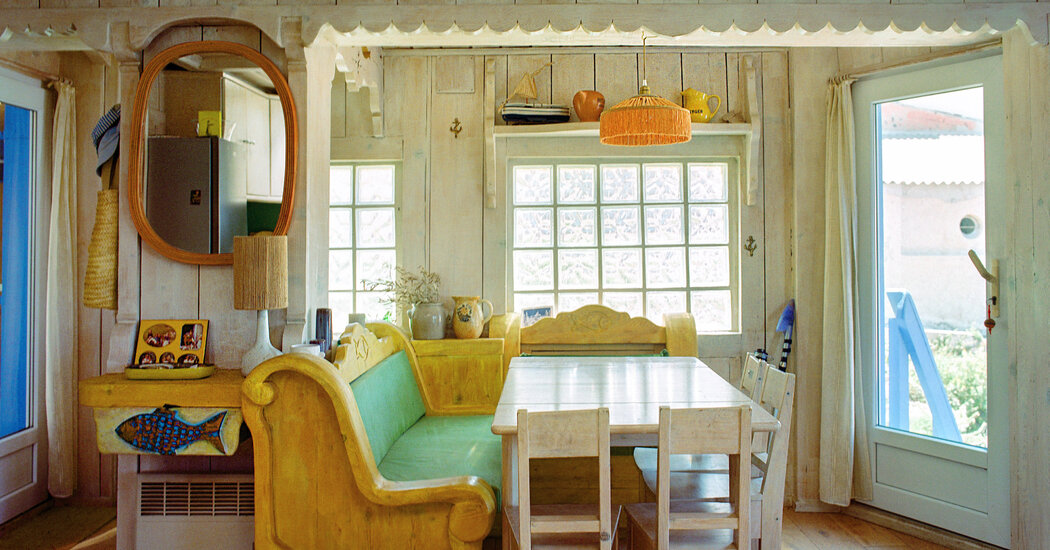Two years ago, when the Paris-based Pauline and Xavier Favre, an executive for a fragrance company and a producer of television commercials, respectively, began looking for a weekend retreat in their native Marseille, they knew exactly what they wanted: a roughly 800-square-foot cabanon on a rocky inlet within 30 minutes of the Vieux Port. A byproduct of the city’s 19th-century industrial boom, cabanons — the word means “shed” in French — were meant to be modest seaside escapes for factory workers and fishermen.
“Cabanons are usually kept within the same family, generation to generation,” says Xavier, 51. “They almost never come on the market.” He and Pauline, 50, bought theirs, a retrofitted 1960s fisherman’s cottage in Les Goudes, a scruffy port village of some 500 permanent residents on the outskirts of Marseille, for about $400,000. With its boxy facade painted a rich, yolky yellow set off by cobalt shutters, the Favres’ two-story cabanon is on a steep slope that rises above the port. You can enter the house on either of the two floors, each with just six-and-a-half-foot-high ceilings. The bottom door leads to a harbor-facing guest room where the original owner stored his boat before enclosing the space. On the upper level is an all-in-one kitchen, living and dining area, as well as the primary bedroom, which barely contains a queen-size mattress, and the cabanon’s lone bathroom.
The previous owners — an army general and his wife, a journalist — paneled the main room in rustic limed wood with scalloped trim. In front of a built-in cabinet, where stacks of plates and linens and bottles of wine from nearby Cassis are stored behind chicken wire, sit heavy, floridly carved banquettes like those on an old-fashioned carousel. “It feels like a chalet, which we didn’t love,” says Xavier. “But on the advice of all the friends and architects we asked, we decided to keep it.” The couple made the place their own by lining open shelves with vintage cafe pitchers, old stoneware confit pots and sgraffito ceramics by the Marseillais potter Vincent Verde. In the living area, which sits on a platform above the kitchen and dining room, hangs a still life of fish and sea urchins by the Provençal painter Eugène Baboulène. Light enters the cabanon on three sides, including through glass bricks that, crucially, thwart the gaze of passers-by — neighboring cabanons are mere steps away. The outdoor space consists of a tiny demilune balcony that overlooks the sea.
If the couple don’t seem too concerned about leaving their mark on their house, it might be because part of it sits on land that isn’t legally theirs; the seafront belongs to the French government, to which they pay a small annual fee. “You never know when they might take it back,” says Xavier. “But we never gave it a second thought.” More important is the opinion of the villagers, who are suspicious of transplants. “It drives Pauline crazy,” says Xavier. “They refuse to believe we’re Marseillais.”







